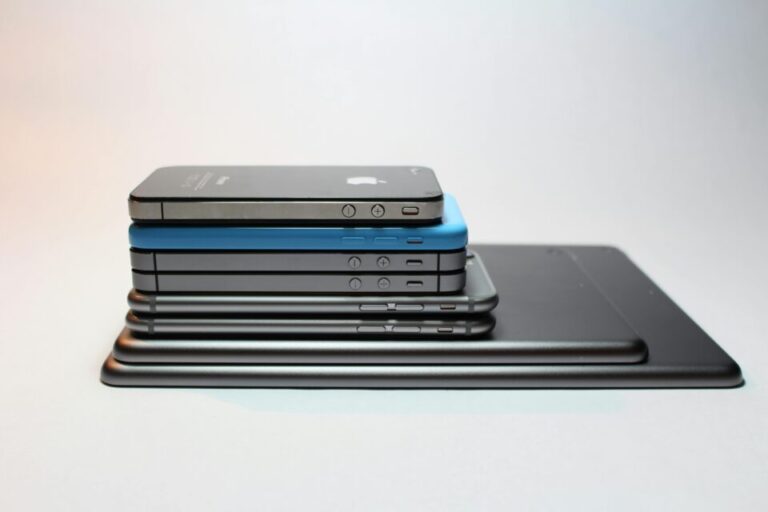In every generation or two, a technical invention occurs that is so huge that it fundamentally alters the foundation, direction, and acceleration of society. The iPhone is one example of a technological invention.
It has made nearly all of the world’s knowledge available at a moment’s notice, reduced the time it takes to discover news and current events from days or even weeks to mere seconds, facilitated social media’s ever-increasing central role in our daily lives, and spawned an industry worth $58.7 billion per year that employs 19 million people worldwide.
But Apple did not set out to transform the foundation of civilization as we know it. Like most transformational inventions, they began with a simple problem and set out to solve it.
This article discusses the history of iPhone development and generation, iOS development tools, iOS app development software, and everything you need to know about iPhone development.
iPhone Development and Generation History
With each new iteration of the iPhone, Apple has attempted to push the phone to the limits of its technological capabilities.
Here’s a comprehensive history of the iPhone’s development, sales, access, availability, and controversies.
Generation 1: The first iPhone
Rumors regarding an iPod that could also function as a phone circulated on the internet for months, if not years, before the arrival of the original iPhone.
When did the first iPhone come out?
When Steve Jobs finally took the stage at the MacWorld convention on January 9th, 2007 to say, “We’re going to reinvent the phone,” iPhone history began, and the smartphone era had arrived.”
Later that year, on June 29, 2007, the first iPhone was available in retailers in the United States, signaling the official start of a new age. To suggest Jobs was correct that this new gadget would disrupt the phone market is an understatement.
In September of the same year, Apple sold its millionth iPhone. Since then, sales have continuously increased, and by 2017, they had sold over 2 billion iPhones. But what made the first iPhone so special and unique?
The iPhone was a combination of three products, according to Steve Jobs. This was:
- A revolutionary mobile phone.
- A widescreen iPod with touch controls.
- A groundbreaking Internet communication gadget that includes desktop-class email, web browsing, search, and mapping.
It’s reasonable to think that the unique touch screen is the most novel feature because nothing like it existed before. However, the first iPhone was a completely new phone in that it allowed users to make calls by merely pointing at and touching a name in their contacts list.
This type of feature had never been seen before, and it contributed significantly to the iPhone’s uniqueness. Furthermore, the introduction of Visual Voicemail enabled customers to view their voicemails as text rather than listening to them.
First iPhone Countries and Carriers
By Christmas 2007, Apple had reduced these prices, much to the consternation of consumers, which helped to improve sales. However, one of the factors that slowed iPhone sales in the beginning, even though the statistics are still stunning, was that the phone was only accessible in a few countries and on limited networks.
In the United States, for example, the iPhone was only available through the wireless carrier Cingular.
This would change in the coming years, but an exclusive agreement between the two firms required that one be a Cingular client to experience the cutting-edge technology included in the iPhone.
In addition to the United States, the iPhone was sold in the United Kingdom and Germany under similar exclusivity contracts to the one between Apple and Cingular.
During its first year, the iPhone became accessible in Belgium, the Netherlands, and France. However, Apple quickly ran into legal difficulties when many European phone carriers sued Apple over its exclusivity pact, causing a temporary halt to iPhone sales in Europe.
Despite this limited availability, iPhones were distributed all over the world, and market expansion became a defining feature of the following chapter in iPhone history.
Generation 2: iPhone 3G
According to Steve Jobs, in the first year of iPhone history, there were extraordinarily high levels of consumer satisfaction, as well as figures demonstrating that users were using the phone as intended, i.e. for email, online browsing, and calling/texting. Furthermore, he explained how six million iPhones were sold in the product’s first year, with sales only ceasing when the firm ran out of stock.
iPhone 3G Capability and Functionality
- Bluetooth 2.0+EDR
- iOS 2.0, but can support up to iOS 4.2 (upgraded from the original iOS)
- 5 hours of talk time or web browsing on 3G
- 10 hours of talk time on 2G
- 6 hours of battery life on WiFi
- 7 hours of battery life for videos
- 8 GB ($199) or 16 GB ($299) of storage space (up from 4 or 8)
iPhone 3G Countries and Networks
As Steve Jobs stated while unveiling the iPhone 3G, Apple made it a priority to expand its market presence into many more nations. So, when the iPhone 3G launched on July 11th, 2008, it was sold to retailers in the following countries:
- Australia
- Austria
- Belgium
- Canada
- Denmark
- Finland
- Germany
- Hong Kong
- Ireland
- Italy
- Japan
- Mexico
- The Netherlands
- New Zealand
- Portugal
- Spain
- Sweden
- Switzerland
- United Kingdom
- United States
On July 17, 2008, the iPhone was released in France, and by August, it had been released in twenty-two other countries, including:
- Argentina
- Chile
- Colombia
- Czech Republic
- Ecuador
- El Salvador
- Estonia
- Greece
- Guatemala
- Honduras
- Hungary
- India
- Liechtenstein
- Macau
- Paraguay
- Peru
- The Philippines
- Poland
- Romania
- Singapore
- Slovakia
- Uruguay
Generation 4: iPhone 4
Approximately 30 million iPhones were sold in the first three years of the phone’s existence, making it one of the most popular and widely coveted goods in the world.
However, Apple, with its insatiable hunger for innovation, wants to go forward with the most recent iteration of its iconic product.
So, the iPhone 4, which debuted on June 24, 2010, marked the first time in iPhone history that Apple completely overhauled the handset.
Of course, certain things remained the same, but so much about the phone had changed that it’s easy to understand how the arrival of this handset heralded a new era in the iPhone’s history.
Many consider the iPhone 4 to be the first “modern phone,” because it served as the foundation for all future models in some fashion.
During the launch ceremony, Jobs said that the iPhone 4 has over 100 new functions compared to the 3GS.
Generation 5: iPhone 4S
After several years of introducing the iPhone in the summer, Apple shook things up in 2011 and released the latest iteration in October.
The iPhone 4S, like the iPhone 3GS, was an intermediate update to the phone. It included some new features and greater usefulness, but the majority of the gadget remained the same.
However, for the first time, the iPhone was available on all three major US networks, paving the way for record first-weekend sales. More than one million were sold on the first day, while Apple sold slightly more than four million on the first weekend.
Generation 6: iPhone 5
While the iPhone 5’s arrival was a year late for some, there’s no denying that it was an exciting moment in iPhone history because it was the first iPhone to use AT&T and Verizon’s ultra-fast LTE networks. However, this was far from the only improvement made to the iPhone 5.
While the iPhone 5 heralded an exciting change in the technology and software Apple employed to manufacture its handsets, this new iteration did not offer many new features, but there were some, such as:
- An improved Siri
- Apple Maps with turn-by-turn navigation
- Apple Passbook (the precursor to Apple Wallet)
- Do Not Disturb
- FaceTime over cellular networks (previously, it only worked on WiFi)
- Facebook integration
Generation 7: iPhone 5S and iPhone 5C
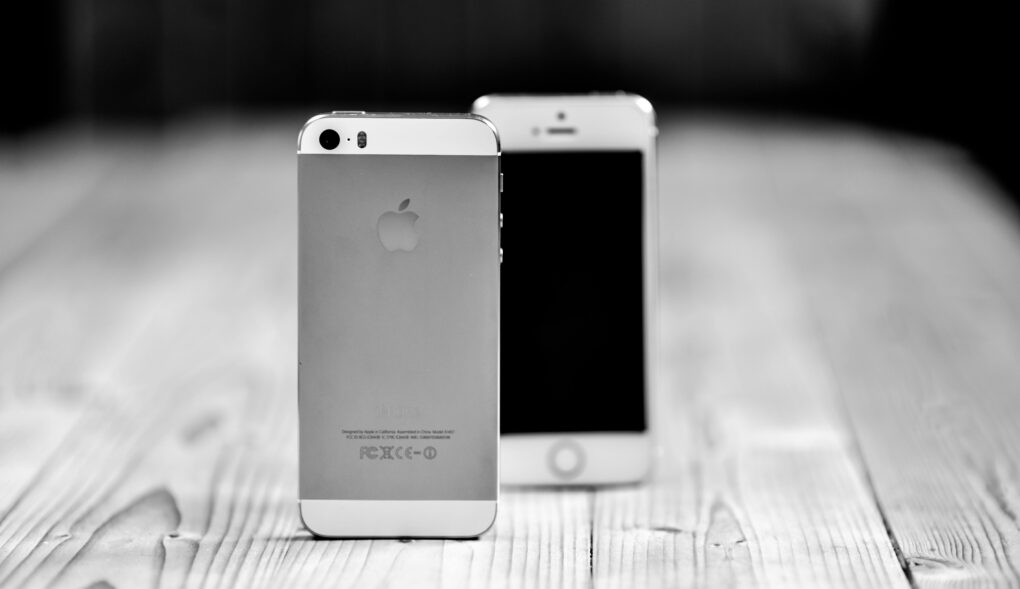
The launch of the iPhone 5S and 5C was a watershed moment in iPhone history, primarily because it was the first time Apple released two iPhones at the same time. Apple faced greater competition than ever before, which contributed to this.
Other phone companies, such as Samsung, have begun to release phones capable of performing comparable functions to the iPhone, and to keep up, Apple needed to provide more possibilities. The differences between the iPhone 5S and 5C highlight this new perspective.
Generation 8: iPhone 6 and 6 Plus
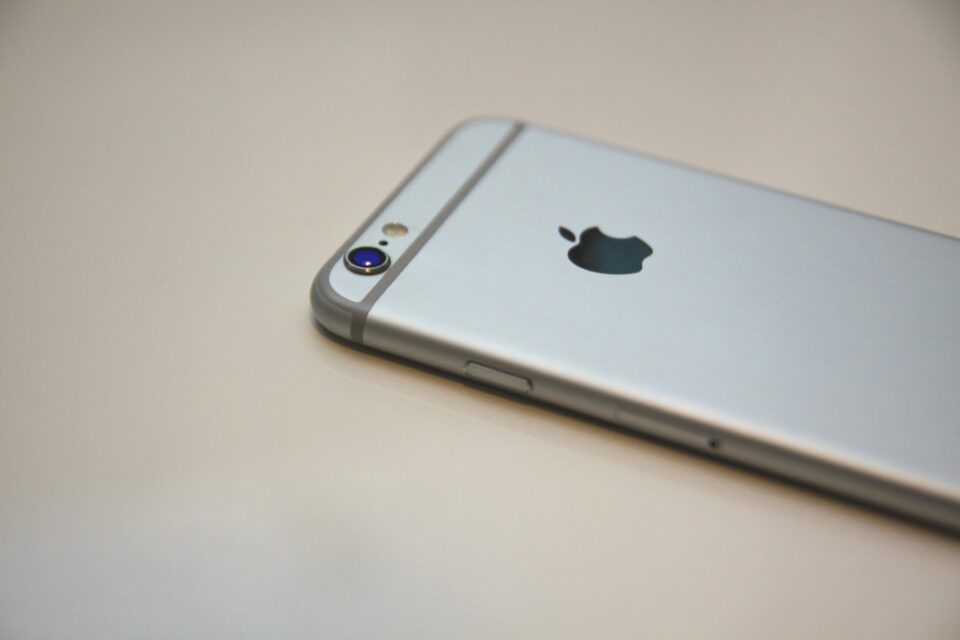
At this stage in iPhone history, releasing a new smartphone once a year had become more than a ritual. Although some of the initial shock and awe had worn off, people continued to queue up for the new technology, and first-weekend sales remained extremely high.
However, at this stage in the iPhone’s history, we might ask a crucial question: what else can they do?
However, this style of thinking is common among those who are not working on the inside. We think of these technologies as magical, but the engineers who are designing them see them as works in progress.
Then, when the new phone is released, we are once again impressed by their ability to improve on a product that many people already thought was fantastic.
Generation 9: iPhone 6S and iPhone 6S Plus
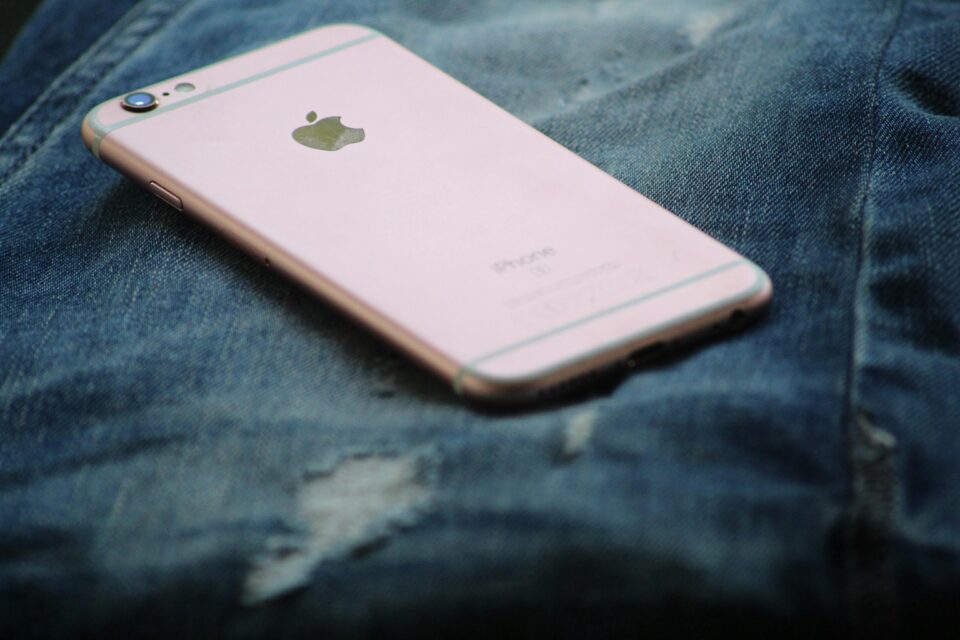
The iPhone 6S and iPhone 6S Plus, like previous intermediate updates, were intended to provide minor improvements over the previous edition. However, these minor updates resulted in considerable improvements in the phone’s performance and user experience.
Like the iPhone 6 and 6 Plus, the 6S and 6S Plus are nearly identical. The sole difference is that the iPhone 6S is bigger than the iPhone 6.
In terms of specifications, this is what was new with the iPhone 6S:
- A 12-megapixel camera (up from 8) capable of recording videos in 4K
- A 5-megapixel front-facing camera
- An Apple A9, dual-core, 64-bit processor with 2 GB RAM (up from 1 GB)
- An M9 Motion Coprocessor
- iOS 9
- Bluetooth 4.2
Generation 10: iPhone SE
Just six months after releasing the iPhone 6S, Apple chose to introduce another iPhone. However, this phone was designed to be a commercial response rather than a pioneering gadget.
After selling 30 million 4-inch iPhones in 2015, Apple chose to release an updated version of the iPhone 5, mostly because it discovered that some customers prefer smaller, more compact phones.
The phone was updated compared to the original iPhone 5, and it was dubbed SE, which stands for Special Edition. Here are the specifications for the iPhone SE:
- 4-inch screen
- 4.0 ounces (second-lightest device in iPhone history)
- A9, dual-core, 64-bit, 1.83 GHz processor with 2GB RAM
- 12-megapixel rear camera
- 1.2-megapixel front camera
- iOS 9.3
- NFC
- Bluetooth 4.2
- 24 hours talk time on 3G
- 12 hours of web browsing time on 3G
- 13 hours of web browsing time on LTE
- 13 hours of battery life on WiFi
- 13 hours of battery life for videos and 50 for music
Generation 11: iPhone 7
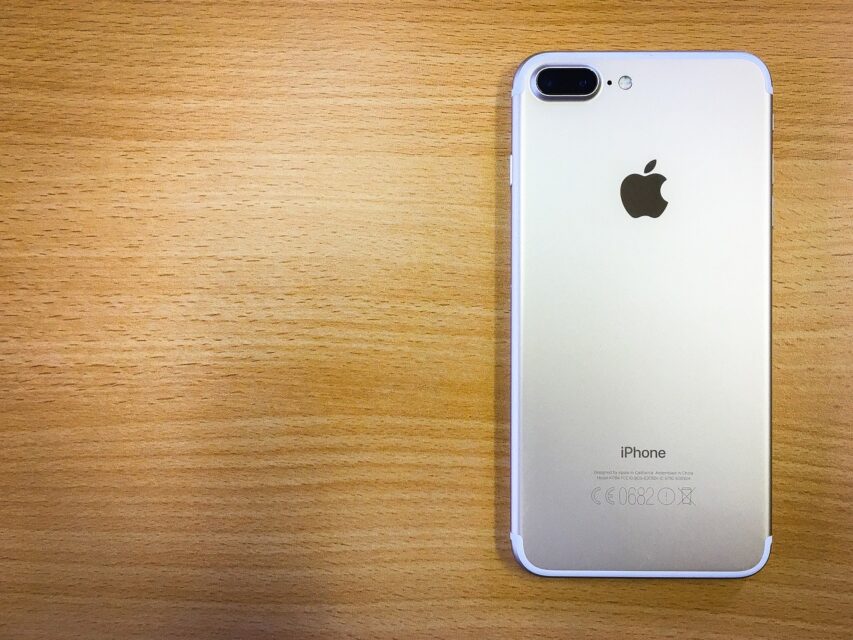
Just about a year after releasing the iPhone 6 and 6 Plus, Apple unveiled a new set of its hallmark devices.
At first glance, the iPhone 7 and 7 Plus appear to be very similar to the iPhone 6 and 6 Plus, but there is one significant variation in appearance.
Apple removed the headphone jack. This was the first time in iPhone history that customers had to connect their headphones via Bluetooth, and the firm was widely chastised for this decision.
Other advancements to the iPhone 7 included a faster processor and longer battery life. Screen sizes, resolutions, and pixels remained largely unchanged. In addition to the screen size, the 7 Plus has two back cameras to help offer even higher-quality photographs.
Aside from that, the two phones were remarkably similar. Here’s an overview of what was new in the iPhone 7 and 7 Plus:
- 7-megapixel front-facing camera
- Apple A10 quad-core, 64-bit, 2.3 GHz processor with 2GB RAM (3GB for 7 Plus)
- M10 Motion Coprocessor
- Stereo speakers
- iOS 10
- 14 (7)/21 (7+) hours talk time on 3G
- 12/13 hours of web browsing time on 3G
- 12/13 hours of web browsing time on LTE
- 14/15 hours of battery life on WiFi
- 13/14 hours of battery life for videos
- 40/60 hours of battery life for just music
- 32GB, 128GB, and 256GB ($449–659)
Generation 12: iPhone 8 and 8 Plus
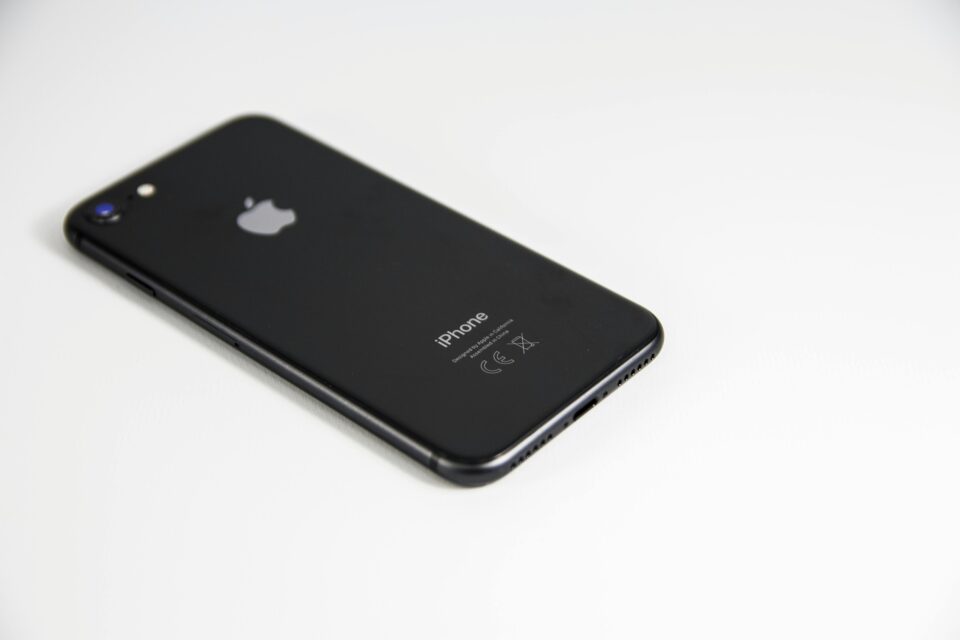
The two new models were introduced on September 22, 2017. For the first time in iPhone history, Apple elected not to release a “S” version of the prior model. Instead, they went straight to the iPhone 8 and iPhone 8 Plus.
However, if you’ve been following the last few chapters of iPhone history, you’ve probably observed that earlier releases provided little in the way of significantly new functionality.
Instead, Apple elected to just add faster processors and better cameras, as this was what the people wanted. Things were pretty much the same with the iPhone 8.
Generation 13: iPhone X
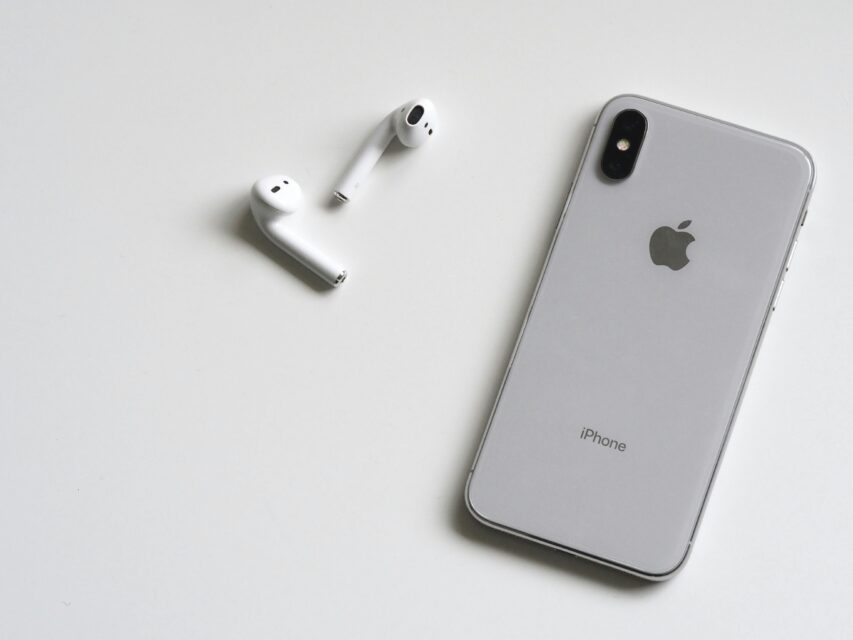
The next generation of iPhone was released on November 3, 2017. After several years of launching iPhones that were essentially the same as the previous year’s edition with minor upgrades, Apple opted for shock value once again when it unveiled the iPhone X, a moment that was supposed to herald a new beginning in the iPhone’s history. Apple also broke with recent precedent by launching this phone in only one version.
Since 2017, all iPhone models have been based on the iPhone X, and this trend is expected to continue in the future. But no one knows for sure.
Generation 14.1: iPhone XS and iPhone XS Max
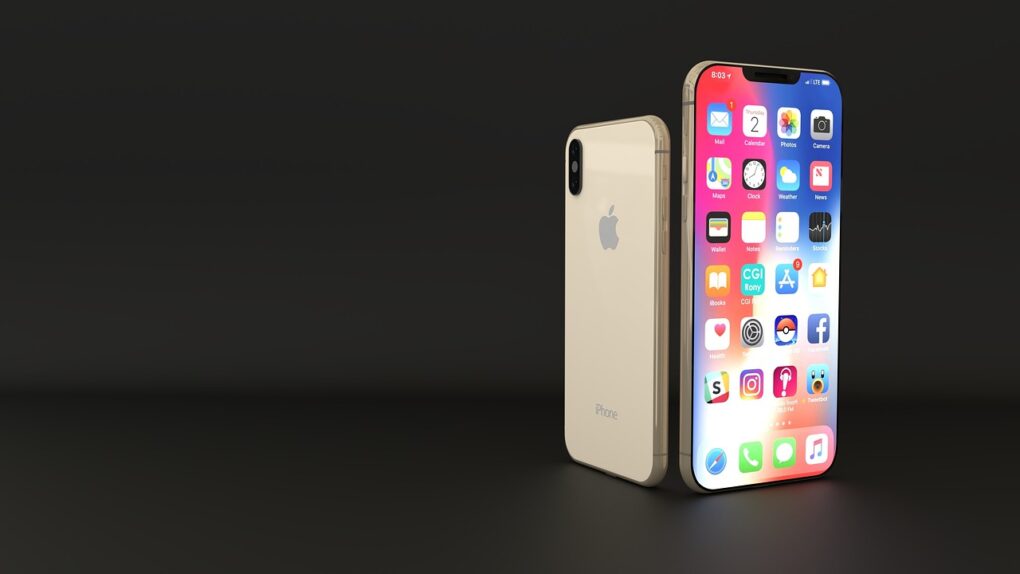
On September 21, 2018, Apple returned to its practice of producing an “S” variant, ushering in the iPhone XS and iPhone XS Plus.
The primary purpose of this upgrade was to improve the iPhone X, a phone that significantly altered the design and functionality of the iPhone while also increasing its speed. In the process, Apple made the phone virtually totally water- and dust-proof.
Generation 15.1: iPhone 11
Perhaps the most intriguing aspect of the iPhone’s arrival in 2019 is Apple’s decision to forgo its complicated lettering scheme in favor of plain numbers. Many people recall when Apple abruptly switched from the iPhone 8 to the iPhone X, which many felt was a change to Roman numerals.
But what about the iPhone 9? And will they call the next one the iPhone XI?
If you’re sweating, don’t worry. We are, too. Fortunately, Apple opted to return to its old numbering system (quietly skipping number 9) and introduced the iPhone 11 on September 10, 2019.
Despite this significant shift away from what it has previously done, the phone’s 15th generation model does not include many new functions. However, there are some reasons to be excited.
Generation 15.2: iPhone 11 Pro and iPhone 11 Pro Max
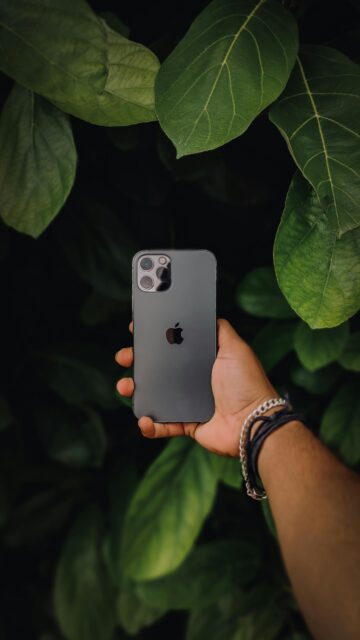
In addition to the iPhone 11, Apple introduced the iPhone 11 Pro and iPhone 11 Pro Max on September 10, 2019.
Like the iPhone 11, this iPhone includes an improved processor (A13 Bionic) and a longer battery life, although the iPhone Pro and Pro Max are designed to last four and five hours longer than the iPhone XS and XS Max, respectively.
The iPhone 11 Pro and Pro Max, like the XS and XS Max, use an OLED Super Retina display, while the standard iPhone 11 features a lower-resolution LCD Liquid Crystal display.
However, the camera is by far the most significant difference between the iPhone Pro/Pro Max and the iPhone 11. For the first time in iPhone history, an iPhone will feature three cameras on the back: one telephoto and one ultra-wide-angle.
This merely demonstrates how much Apple values an excellent camera in a phone. We live in the Instagram era, guys.
Generation 16.1: iPhone 12 and 12 Mini
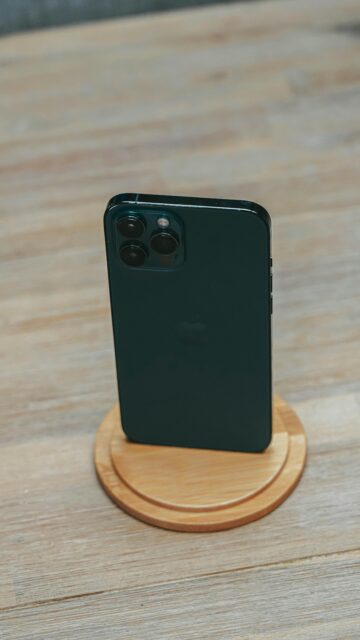
Although 2020 was a crazy year for many reasons, most notably the Coronavirus pandemic, certain things remained consistent, like as Apple’s release of a new iPhone. This generation of iPhones, known as the iPhone 12, heralded a new era in the iPhone’s history.
The iPhone 12 was unveiled on June 22, 2020, during Apple’s Worldwide Developer Conference. Pre-orders for the iPhone 12 and iPhone 12 Pro commenced on October 16, 2020, and will be available in stores on October 23, 2020.
Pre-orders for the iPhone 12 Mini and iPhone Pro Max began on November 6, 2020, and they will be available in retailers starting November 16, 2020.
Generation 16.3: The iPhone SE (Mk. 2)
After a two-year sabbatical, Apple brought back the iPhone SE in 2020. The original iPhone SE (which resembled the iPhone 5) was released in 2016 as a low-cost alternative to the iPhone 7, which also debuted that year. However, the brand was discontinued in 2018.
Apple restored the “SE” moniker and unveiled the second iPhone SE on April 15, 2020. Pre-orders began on April 17, 2020, with the phone being released on April 24, 2020.
It was a new 4.7-inch device that resembled an iPhone 8 and had features comparable to those of the iPhone 11.
Generation 17.1: iPhone 13 and iPhone 13 Mini
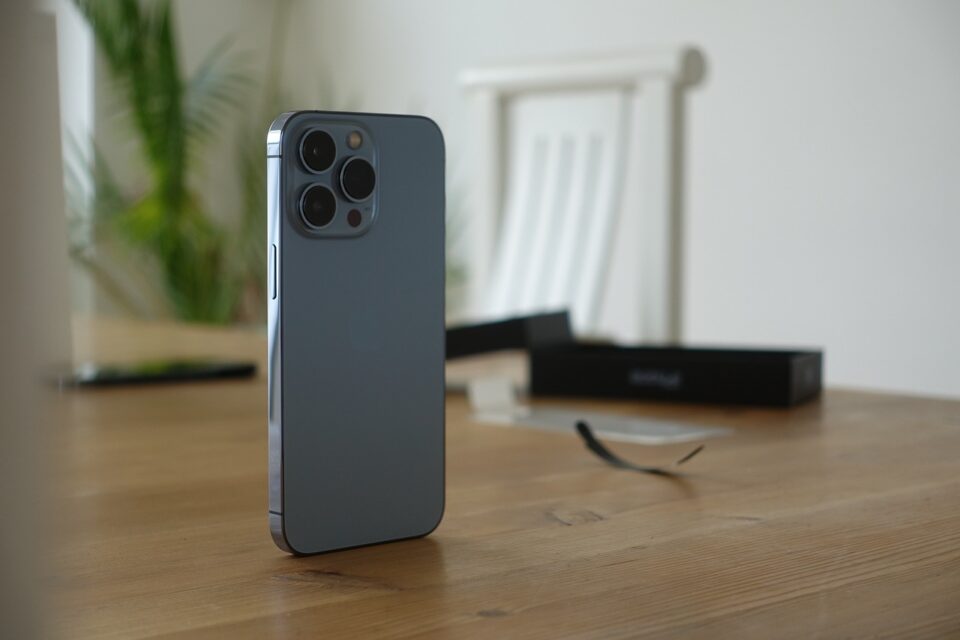
Just a little more than a year after the debut of the iPhone 12, Apple released the latest model in its long series of iPhone generations: the iPhone 13, which comes in four different variations: the iPhone 13, iPhone 13 small, iPhone 13 Pro, and iPhone 13 Pro Max.
The iPhone 13 was revealed on September 14, 2021. Pre-orders began on September 17, 2021, and the device was available beginning September 24, 2021.
The iPhone 13 has 5G capability, as does the iPhone 12, but customers will be able to enjoy significantly faster speeds. The iPhone 13 features a flat-edge display and an aluminum frame, similar to the iPhone 12.
Generation 17.2: iPhone 13
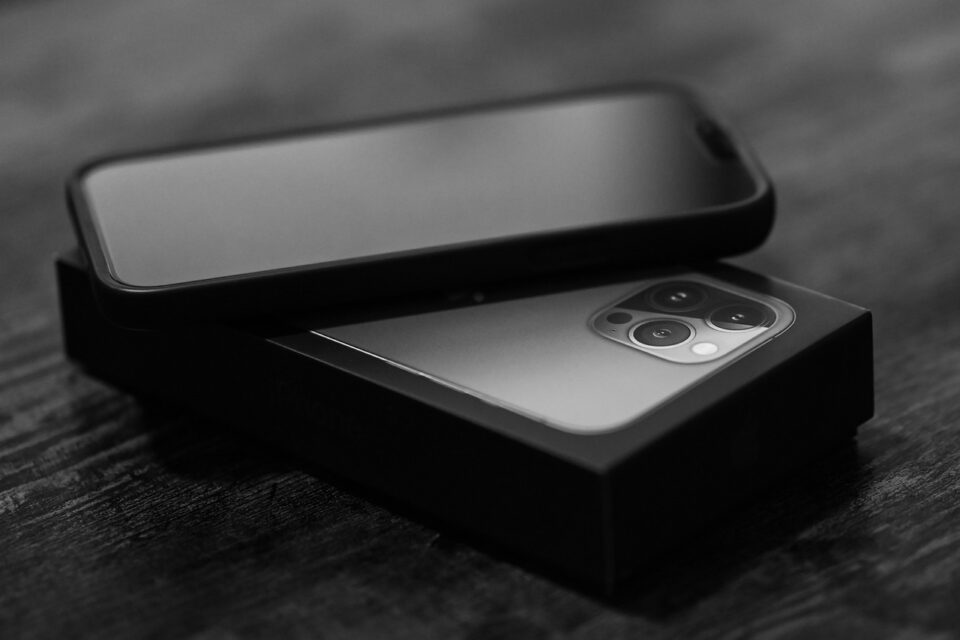
In 2021, Apple introduced the iPhone 13 in two models, just as it did in 2020: iPhone 13/iPhone 13 Mini and iPhone 13 Pro/iPhone Pro Max.
The two are fairly similar; however, there are a few important distinctions. Specifically:
The iPhone 13 Pro Max features a 6.7″ Super Retina XDR display with ProMotion. The iPhone 13 Pro features a 6.1″ Super Retina XDR display with ProMotion, while the standard iPhone 13 has a 6.1″ display without ProMotion. The iPhone 13 Mini features a 5.4″ display.
Generation 18: iPhone 14, 14 Plus, 14 Pro, and 14 Pro Max
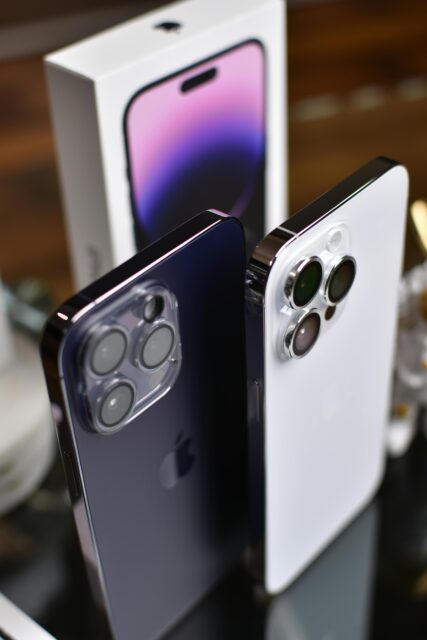
Almost one year after the debut of the iPhone 13, Apple introduced the iPhone 14, the latest iteration of the iPhone. Technically, in the 18th iteration of this iconic phone, not much changed between 2021 and 2022.
One significant change Apple made with the debut of the iPhone 14 was the removal of the Mini.
Apple had experimented with smaller handsets for the past two years, but poor sales indicated that people preferred larger screens; therefore, Apple had temporarily halted the release of this product.
Apple revealed that the new iPhone 14 will be released on September 7, 2022. Pre-orders began on September 9, 2022, with the phone becoming available on September 17, 2022.
Generation 19: iPhone 15
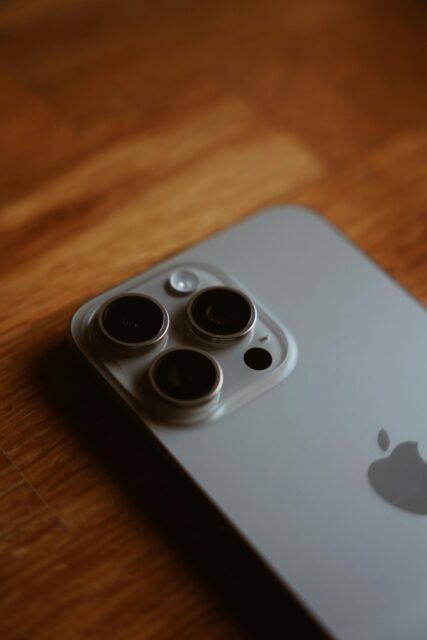
Apple revealed the highly anticipated iPhone 15 series at its annual event in September 2023, which was both in-person and virtual. This event saw a return to more conventional, pre-pandemic presentation methods, but also maintained the digital accessibility that had proven popular in previous years. The iPhone 15 series was formally released to the public in late September 2023.
What is the iPhone Development Software?
In a nutshell, iOS development is the process of creating apps specifically for Apple’s operating system. iOS development entails creating unique device applications for iPhones, iPads, and Mac PCs.
Mastery of one of the two programming languages, Swift or Objective-C, is essential for iOS development.
Swift is less difficult to learn and read than Python, Java, JavaScript, C#, and C++. It is also a high-level programming language with security and performance as its top priorities, making it 2.6 times quicker than Objective-C.
In contrast, Objective-C is a general-purpose iOS programming language that is a superset of C.
Apple apps written in this programming language include object-oriented capabilities. Simply put, these apps structure software architecture around objects or data rather than logic and operations.
Most developers prefer to keep their existing programs in this language rather than integrate them into the Swift framework. What distinguishes iOS development is that it is not open source, unlike Android apps.
Furthermore, unlike desktop applications, which require tremendous power and storage, iOS apps must be made lighter as installable software because they run on mobile phones and iPads, which are less powerful and have less storage than desktop PCs.
What is the iPhone Development Software Used for?
The development software, sometimes known as Xcode, is an integrated development environment (IDE) that allows developers to create programs for Apple’s iOS devices, including the iPhone. Xcode is required for anyone wishing to create apps for the Apple ecosystem.
This software is used to develop applications for macOS, iOS, iPadOS, watchOS, and tvOS. It includes a code editor, debugger, and performance analysis tools.
It also supports a variety of programming languages, the most common of which are Swift and Objective-C for iOS development.
The 5 Best iOS App Development Software
With the help of our experienced iOS developers, we’ve compiled a list of the six finest iOS development tools for you to consider. We’ve organized the information by rating, price, and feature.
| Tool | Developed by | Price | Features |
| XCode | Apple | Free | Single-window interface. Intelligent source code editing. Integrated support for Git version control. Integrated debugging. |
| AppCode | JetBrains | 30-day free trial
$199/yr |
Smart code assistant Built-in tools and integrations. Multiple languages – one IDE. |
| CodeRunner | Nitobi | Free
$19.99 |
Write and run code in any language with advanced code completion. Live errors and linting First-rate text editor |
| Flutter | Free | Free and open-source. Fast development, visually appealing interfaces, and native performance. |
|
| AppyPie | Appy Pie Inc | Free | Provides app analytics. Prototyping tools for iPhone and Android include capabilities such as IAP, GPS, and push messages. |
Getting Started with iPhone Development Tools
To create iOS apps, you’ll need a Mac computer running the most recent version of Xcode. Xcode is Apple’s integrated development environment (IDE) for Mac and iOS programs. Xcode is the graphical interface you’ll use to create iOS applications.
Xcode comprises the iOS SDK, as well as the tools, compilers, and frameworks required for designing, developing, writing code, and debugging iOS apps.
Apple recommends adopting the current Swift programming language when developing native mobile apps for iOS.
It is vital to know that Xcode is only available on Mac OS X and is the only supported method of developing iOS apps.
iOS Software Development Kit (SDK)
Explore the iOS SDK’s tools, technologies, capabilities, and languages, which enable app creation. Cocoa Touch frameworks such as UIKit, GameKit, PushKit, Foundation Kit, and MapKit are crucial components of the iOS SDK.
These frameworks and others allow you to control the iPhone or iPad camera, add voice interaction through SiriKit, explore music with MusicKit, expand viewing and listening with AirPlay 2, and even integrate iMessage Business Chat into your application. iOS 11 improved machine learning capabilities with Core ML and augmented reality (AR) experiences with ARKit.
- Prepare your development environment
- Download Xcode
- Launch Xcode and create a New Project
- Get familiar with Xcode
Use Xcode’s iOS Simulator to build and execute your app. The iOS Simulator allows you to preview what your app will look like and interact with it as if it were a real device. You may test your app on several hardware types and iOS versions.
Beta Testing
After you’ve built and tested your app (using the XCTest framework or iOS Unit test), you can use TestFlight to invite users and collect feedback before uploading it to the App Store. This is an excellent opportunity to experiment with Push Notifications, data storage with Core Data, and network calls to third-party APIs. To get started, just submit a beta build of your app and utilize iTunes Connect to add tester names and email addresses. The testers will download the TestFlight app for iOS to interact with your app and provide vital feedback.
Cloud Testing
Testing your iOS app on real devices is vital because the real device’s performance, different operating system versions, and firmware upgrades made by the manufacturer and carrier can all cause unforeseen issues with your app.
Testing on a real device provides you with a more accurate picture of how your users interact with your application.
On the other hand, getting physical equipment for testing is a logistical challenge. Here’s where cloud testing comes into play:
Cloud testing allows you to test your application on real devices that are available through the cloud. To ensure the quality of your application, you can use either human or automated testing methods.
Deployment
After you’ve built, tested, and beta-tested your iOS software, you may publish it to the software store. At this stage, you must enroll in the Apple Developer Program.
As a member, you’ll have access to beta software, advanced app features, extensive beta testing tools, and app analytics.
4 Best Free iOS Development Course for Beginners to Learn Online in 2024
Here’s a list of some of the greatest free online courses for learning iOS and developing iPhone and iPad apps.
1. Build Great iOS Apps (Swift) [FREE Udemy Course].
This is one of the best free courses for learning Swift and iOS app development on Udemy. Unlike most free Udemy courses, which are only 30 minutes to an hour long, this course contains a reasonable amount of substance—about 4 hours of lectures.
Check course here
2. The Complete Swift iOS Developer: Create Real Apps in Swift
This 49-hour free Udemy course is the best iOS and Swift course I’ve discovered online. It’s as good as many premium iOS courses on Udemy, and with 49 hours of content and topics covered, buying it for free is a no-brainer.
Here is what you will learn in this free iOS course:
- How to create useful iOS apps
- Making GPS maps
- Making ticking clock apps
- Transcription apps
- Calculator apps
- Converter apps
- RESTful and JSON apps
- Firebase apps
- Instagram clones (but better 😉
- Fancy animations to WOW users
- Creating compelling apps
Check course here
3. iOS App Development For Beginners
Developing for iOS is an in-demand and useful skill, but if you’ve never produced anything for Apple before, it might be frightening, which is where a good course like this one can assist.
This course will teach you how to create a whole iOS app without writing a single line of code using iOS 11 and Xcode 9, Apple’s Swift IDE.
In short, this is a terrific tutorial for novices and anyone looking to get started with iOS 11 and Xcode 9.
You also need not need Swift programming abilities to take this course, though I recommend learning Swift because it will benefit you a lot in the future.
Check course here
4. iOS Fundamentals
In this course, you’ll learn how to rapidly get started using Xcode 9 and Swift 4 to create outstanding iOS apps and take advantage of the latest iOS 11 capabilities.
This is one of the comprehensive courses that will teach you everything an iOS developer needs to know.
You will first learn about the tools and how to develop iOS apps with adaptive user interfaces that function on many devices (including the iPhone X).
Check course here
